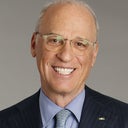What would I need to have done to get me from this, to this? Nasal bridge reduction and nostril reduction? I don't have a problem with my side profile, I just want a smaller version if my nose.
Answers (93)
From board-certified doctors and trusted medical professionals
Dr. Zoran Potparic, MD

Dr. Zoran Potparic, MD
Board Certified Plastic Surgeon
Answer
Dr. Stanley Okoro, MD

Dr. Stanley Okoro, MD
Board Certified Plastic Surgeon
Answer
Dr. John E. Sherman, MD, FACS

Dr. John E. Sherman, MD, FACS
Board Certified Plastic Surgeon
Answer
Dr. Andrew Miller, MD

Dr. Andrew Miller, MD
Board Certified Facial Plastic Surgeon
Answer
More Rhinoplasty Questions
See all Rhinoplasty Q&AWE SEND PRETTY
EMAILS
What’s trending? Who’s turning heads? Which TikTok myths need busting? We’ve got you. No fluff, no gatekeeping—just real talk. Get our free, unfiltered newsletter.






